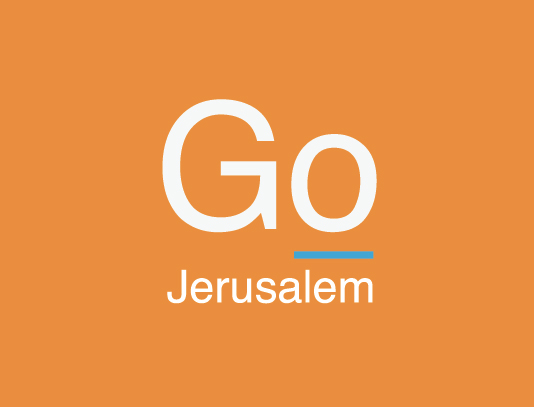Custos of the Holy Land ready to welcome thousands

The position of Custos was created more than 800 years ago. Unlike the other Ministers Provincial of the Franciscan Order, the Custos is elected directly by the Holy See. The term used at the time to designate the task was “custody” of the holy places, hence the title “Custos.”
Name: Friar Pierbattista Pizzaballa
Age: 44
Position: The Custos of the Holy Land, Minister Provincial (i.e. the major superior) of the Friars Minor living in the whole Middle East
Residence: In the Offices of the Custody at St. Saviour's Convent at New Gate in the Old City of Jerusalem
Hobbies: The Custos has played the piano since he was nine. He loves to listen to all kinds of music, especially Classical and Baroque, but modern music as well. He also loves to read.
For me, Jerusalem is... "faith, religion, tradition, passion, tensions, suspicions, hope, love, colors, the perfumes and flavors of Easter, contrasts...”
Friar Pierbattista Pizzaballa has met with Pope Benedict XVI several times before. As the superior of all Franciscans in the Middle East and the man responsible for all Catholic holy places here, he has also met numerous dignitaries and heads of state. And while he laughs as he describes the “big headache” that the preparations for the Pope's historic visit present – from seeing to the logistics, security issues and permits, to organizing hundreds of people across Israel – he says that he is also suffused with joy and excitement.
The Custos ensures the continuation of the status quo which regulates life at the Holy Sepulchre in Jerusalem and at the Church of the Nativity in Bethlehem. He is the superior of all the Franciscans in the Middle East and is responsible for all the Catholic holy places. It is also his job to coordinate and direct the reception of pilgrims to the Holy Land. The Custos recounts: “After the Crusaders left, the Franciscans were the only Catholic presence that was allowed to remain, as they were not perceived as a threat to the Muslims. In 1342, Pope Clement VI tasked the Franciscans with recovering the holy places and reorganizing the Catholic presence in the Holy Land. They thus reacquired the holy places from the Ottoman Empire and began to organize pilgrimages. To this day, the Custos encourages pilgrimages from all over the world and welcomes pilgrims."
The Custos pides pilgrims to the Holy Land into two categories, those who seek a religious experience and those who see themselves as tourists. For both, he suggests that a minimum stay be no less than eight days. He emphasizes that pilgrims should prepare themselves spiritually through study and prayer before they arrive. He also advises that they not try to cram in too much, but give themselves enough time to enjoy each place fully: “The Holy Land is also people, not just holy places. In Israel, you have the unique opportunity to see Christians from different denominations, as well as Jews and Muslims. One should try to find time to pray with the local Christians; to spend a Sabbath in Jerusalem and experience the peace of the city of prayer on its day of rest.”
The Italian-born Custos has spent 20 years in Jerusalem, is an expert in the Old Testament, studied the New Testament under Hebrew University Professor David Flusser and speaks Hebrew fluently. He was appointed as Custos, one of the main Christian religious authorities here, in 2004, during the second Intifada. At the time, he says, “there were no pilgrims at all, the holy places were empty, the atmosphere was tense.” Today, in 2009, he says that Jerusalem is a changed city: “While some things, like the Old City and the traditions never change, the figures for 2008 were that two million Christian pilgrims visited.”
Due to the war in Gaza that ended in January and the global economic crisis, far fewer pilgrims are expected this year, but the Custos asserts that the Pope's visit will have a strong impact on Christians all over the world. He says it will start with the church officials, spread to the parish priests and trickle down to their flocks; he anticipates a strong influx of pilgrims in the wake of the papal visit.
As the date of the visit draws nearer, the Custos says he will soon take a break from the technical preparations. He will think carefully about what he should impart to the Pope, and find a way to put his deep feelings into the right words.
For links to more of our Pope-related content, and to download a pdf of the special Pope edition of our Everything Jerusalem guide, which includes maps, itineraries and guides to holy places, click here.
2000+ tips and recommendations
Alright, we'll be the first to admit it. Jerusalem's often chilly and often damp winters don't exactly exude...
In a region known for being one of the first in which early humans settled after leaving Africa, and in a city populated...
Looking for a place to begin your morning in luxury and style? Look no further than the American Colony Hotel, which offers...
Jerusalem, the city where kings ruled and sultans sat is no stranger to luxury. Today, even the visiting yeoman can find...
Jewish tradition holds that in the times of the First and Second Temples, all the Jewish people would gather in Jerusalem...
Technically, it's possible to visit Jerusalem without going to the Old City, but it would be hard to say you'd...
Looking for a place to begin your morning in luxury and style? Look no further than the American Colony Hotel, which offers...
The faithful may rhapsodize about the spiritual highs to be reached in the Old City; culture cognoscenti groove on the...
Once upon a time, options for eating out in Jerusalem were limited to local common phenomena such as falafel and schwarma,...
No results to show





|
Text text text
|
||